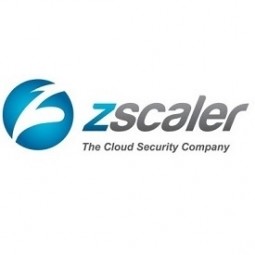技术
- 网络安全和隐私 - 恶意软件保护
- 基础设施即服务 (IaaS) - 云数据库
适用行业
- 国家安全与国防
- 零售
用例
- 篡改检测
- 交通监控
服务
- 云规划/设计/实施服务
关于客户
蒙特雷地区银行 (BanRegio) 是一家领先的金融服务机构,总部位于墨西哥蒙特雷。该银行成立于 1994 年,多年来发展迅速,拥有 100 个分行,为 2,000 名用户提供服务。 BanRegio 的主要专业领域包括零售、中小企业、保理、租赁、消费金融和私人银行服务。该银行的快速增长和新分支机构的扩张导致运营和带宽成本增加,因此需要一个强大且经济高效的解决方案来管理其复杂的安全基础设施。
挑战
蒙特雷地区银行 (BanRegio) 是墨西哥蒙特雷领先的金融服务机构,由于业务快速增长,面临着多项挑战。新分支机构的扩张导致了较高的带宽成本,因为流量从 100 个位置回传到中央站点。这导致了高昂的运营成本,并增加了维护大型预先批准的 URL 列表的复杂性。该银行使用的是基于中央代理的 URL 过滤解决方案,该解决方案不包括基于网络的防病毒解决方案。这对银行的安全基础设施构成了重大挑战,使其容易受到潜在威胁。基于设备的解决方案不仅成本高昂,而且无法解决回程问题,从而加剧了银行的运营困境。
解决方案
BanRegio 求助于 Zscaler 基于云的 Web 安全解决方案来应对挑战。该解决方案无需购买和维护基于设备的解决方案,从而降低了基础设施的复杂性和成本。基于云的解决方案允许用户将流量转发到云端,与流量回传到中央办公室相比,显着减少了带宽使用量。 Zscaler 的解决方案提供更低的延迟、灵活的网站访问、增强的组织安全可见性、抵御高级威胁以及跨 Web 渠道的数据丢失防护。该解决方案位于墨西哥的本地数据中心和全球 40 多个数据中心确保减少延迟。 Zscaler 的大型分层 URL 数据库消除了对大型预先批准的 URL 白名单的需要,为用户提供了对网站的灵活访问。该解决方案的交互式实时报告提高了整个组织的安全可见性,使 BanRegio 能够跟踪分支机构或部门的使用趋势。
运营影响
数量效益

Case Study missing?
Start adding your own!
Register with your work email and create a new case study profile for your business.
相关案例.

Case Study
Improving Production Line Efficiency with Ethernet Micro RTU Controller
Moxa was asked to provide a connectivity solution for one of the world's leading cosmetics companies. This multinational corporation, with retail presence in 130 countries, 23 global braches, and over 66,000 employees, sought to improve the efficiency of their production process by migrating from manual monitoring to an automatic productivity monitoring system. The production line was being monitored by ABB Real-TPI, a factory information system that offers data collection and analysis to improve plant efficiency. Due to software limitations, the customer needed an OPC server and a corresponding I/O solution to collect data from additional sensor devices for the Real-TPI system. The goal is to enable the factory information system to more thoroughly collect data from every corner of the production line. This will improve its ability to measure Overall Equipment Effectiveness (OEE) and translate into increased production efficiencies. System Requirements • Instant status updates while still consuming minimal bandwidth to relieve strain on limited factory networks • Interoperable with ABB Real-TPI • Small form factor appropriate for deployment where space is scarce • Remote software management and configuration to simplify operations

Case Study
Digital Retail Security Solutions
Sennco wanted to help its retail customers increase sales and profits by developing an innovative alarm system as opposed to conventional connected alarms that are permanently tethered to display products. These traditional security systems were cumbersome and intrusive to the customer shopping experience. Additionally, they provided no useful data or analytics.

Case Study
How Sirqul’s IoT Platform is Crafting Carrefour’s New In-Store Experiences
Carrefour Taiwan’s goal is to be completely digital by end of 2018. Out-dated manual methods for analysis and assumptions limited Carrefour’s ability to change the customer experience and were void of real-time decision-making capabilities. Rather than relying solely on sales data, assumptions, and disparate systems, Carrefour Taiwan’s CEO led an initiative to find a connected IoT solution that could give the team the ability to make real-time changes and more informed decisions. Prior to implementing, Carrefour struggled to address their conversion rates and did not have the proper insights into the customer decision-making process nor how to make an immediate impact without losing customer confidence.

Case Study
Ensures Cold Milk in Your Supermarket
As of 2014, AK-Centralen has over 1,500 Danish supermarkets equipped, and utilizes 16 operators, and is open 24 hours a day, 365 days a year. AK-Centralen needed the ability to monitor the cooling alarms from around the country, 24 hours a day, 365 days a year. Each and every time the door to a milk cooler or a freezer does not close properly, an alarm goes off on a computer screen in a control building in southwestern Odense. This type of alarm will go off approximately 140,000 times per year, equating to roughly 400 alarms in a 24-hour period. Should an alarm go off, then there is only a limited amount of time to act before dairy products or frozen pizza must be disposed of, and this type of waste can quickly start to cost a supermarket a great deal of money.

Case Study
Supermarket Energy Savings
The client had previously deployed a one-meter-per-store monitoring program. Given the manner in which energy consumption changes with external temperature, hour of the day, day of week and month of year, a single meter solution lacked the ability to detect the difference between a true problem and a changing store environment. Most importantly, a single meter solution could never identify root cause of energy consumption changes. This approach never reduced the number of truck-rolls or man-hours required to find and resolve issues.








